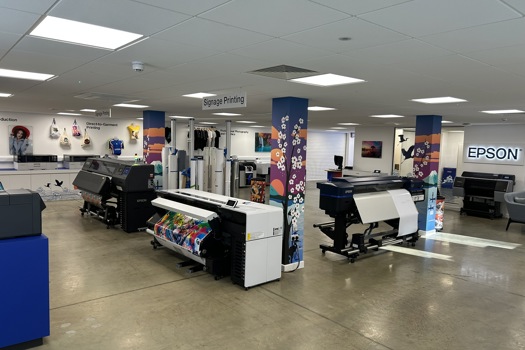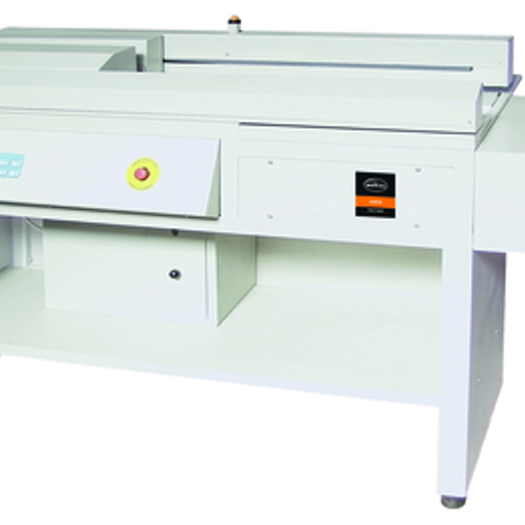The prototype on show can bind 100 lay-flat books per hour, but the production model, due for release in September, will bind 500 books per hour, and will handle books up to 420mm long and 50mm thick.
It is targeted at small operations looking to transfer some hand binding to a machine that is inexpensive to run.
Cold glues can be used without compromising quality, said Ribler managing director Franz Landen, because of the binder’s spine milling technology, which prepares paper fibres for better glue absorption.
Good quality results can be achieved on special media such as laminated or thick substrates, he added, but extra drying time is required.
The binder also boasts the environmental benefit of water-based glue which is recyclable and less hazardous to work with than polyurethane glues.
"Hot melt glues can be very toxic and take much longer to break down," said Landen. "People are interested in the environmental benefits of the binder but mainly the cost-saving implications of the fact that, while the average 5,000 length run of 10mm A4 books requires 130kWh of energy to heat the glue, the Eco binder uses less than 1kWh."Tweet
Have your say in the Printweek Poll
Related stories
Latest comments
"Very insightful Stern.
My analysis?
Squeaky bum time!"
"But in April there was an article with the Headline "Landa boosts top team as it scales up to meet market demand", where they said they came out of last year’s Drupa with a burgeoning order..."
"Yep. Tracked is king."
Up next...

Local reports say 100 jobs will go
Landa restructures, seeks investment

Flexible working now integral
BPIF rationalises office space

Showcasing commercial benefits
Epson and Fiery to hold ‘Think Big, Print Big’ event

2 July completion target






